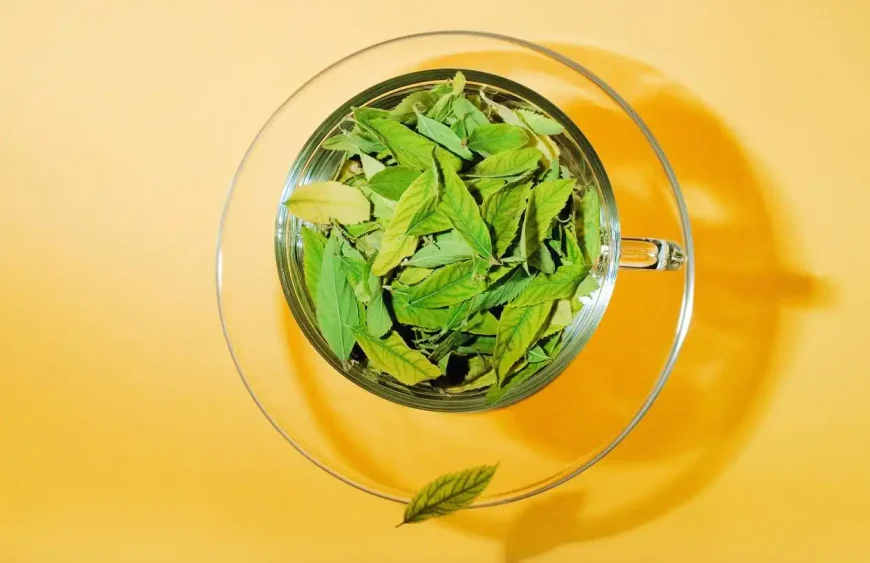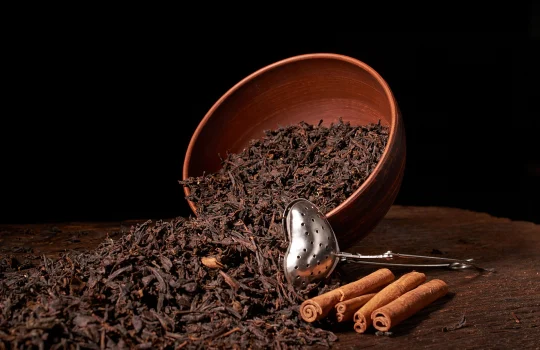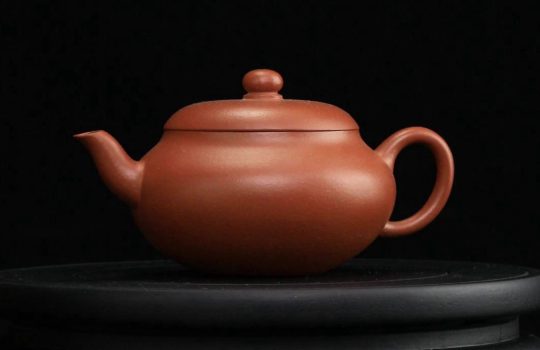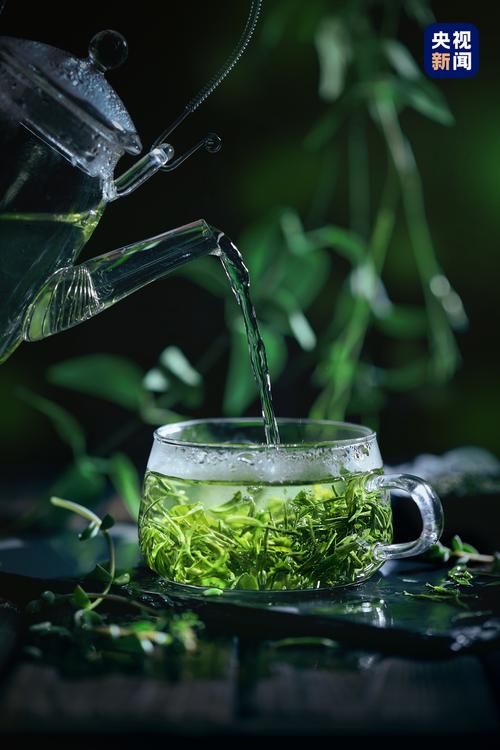The raw materials of tea are like the cornerstone of a building, directly laying the foundation for the quality of the tea, and this is one of the significant differences between cheap tea and expensive tea.
From the point of view of picking time, expensive tea often has strict requirements on the timing of picking. Take the green tea in the Mingqian tea, it is in the Qingming Festival before the picking of young buds or a bud and a leaf. At this time the tea tree after a whole winter of rest and recuperation, the accumulation of sufficient nutrients, and the spring temperature is low, the tea grows slowly, so that the buds within the amino acids, tea polyphenols and other nutrients are rich, the quality of the natural outstanding. Like the West Lake Longjing, Mingqian tea not only taste fresh, the aroma is also more fragrant, the price is naturally expensive. In contrast, cheaper teas may not be picked at the same time and may be picked after the Qingming Festival or even later. With the passage of time, the nutrients in the tea leaves are depleted, the leaves also gradually become old, the quality is difficult to be comparable with the pre-mingming tea, the price is relatively affordable.
The tenderness of tea leaves is also a key factor affecting the price. Your tea is mostly selected from buds with high tenderness, such as Jinjunmei, which only selects single buds of the tea tree as raw materials, with fat buds, full of golden hairs, and it takes about 5 – 60 thousand buds to make one catty of Jinjunmei, which is difficult to pick and costly, and is naturally expensive. The tea made from it has a fresh taste and elegant aroma. Cheap tea may contain more mature leaves or even leaf stalks, with low tenderness, rougher taste and lighter aroma, making the price much cheaper.
Tea tree varieties should not be ignored. Some rare varieties of tea trees, such as the Da Hong Pao mother tree, its output of tea with unique flavour, production is scarce, known as the treasures of tea, the price is staggering. There are like Yunnan’s ancient tea trees, tree age up to hundreds or even thousands of years, they produce tea rich in substance, long flavour, made of Pu’er tea is highly sought after, the price remains high. In contrast, ordinary tea tree varieties have large yields, relatively ordinary tea quality, and more affordable prices.
Craftsmanship: Craftsmanship Achievement
Craftsmanship is like a pair of magical hands, giving tea a unique soul, which is also an important watershed between cheap tea and expensive tea.
Expensive tea, in the process of craftsmanship can be described as meticulous. Like the traditional Zhengshan Xiaojiao, using the pine smoke smoking process, in the production process, the tea blanks in the green house by the pine open fire baking, absorbing the pine smoke incense, this unique process makes Zhengshan Xiaojiao has a unique pine smoke incense and cinnamon broth flavour, mellow taste, rich layers. The entire production process relies on the tea master with many years of experience, precise grasp of the fire, time and techniques, each process can not afford to lose, cohesion of the deep craftsmanship and heritage. Wuyi Rock Tea Dahongpao, the production process is extremely complicated, through withering, greening, killing, kneading, baking and other processes. One of the most critical aspects of the green, through the alternation of shaking and drying green, so that the tea in the collision, static in a series of complex biochemical reactions, the formation of a unique ‘rock rhyme’, which requires the master of the state of the tea leaves have a keen sense of perception and superb skills, manpower, time and high cost, the price of nature is not expensive.
Cheap tea is more often mechanised to improve efficiency and reduce costs. Although mechanical picking is fast, it is not able to select buds and leaves accurately, and the picked leaves may be unevenly aged and tender, affecting the purity of the tea leaves. In the subsequent processing, the machine follows a fixed procedure to kill the green, kneading, drying and other operations, although it can ensure the stability of production and yield, but lacks the flexibility of manual operation. For example, in the killing, the machine is difficult to adjust the temperature and time in real time according to the actual situation of each batch of tea, such as water content, tenderness, etc., resulting in the aroma and taste of tea is not delicate, rich, relatively single flavour. However, mechanised production also has its advantages, it makes the price of tea more affordable, and can meet the public’s daily demand for large quantities of tea.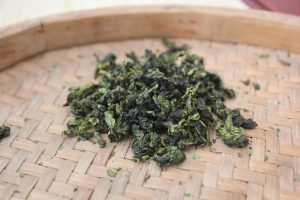
Taste: Savouring the Beauty of Layers
When we pick up a cup of tea, the moment the tea broth slips over the tongue, the taste becomes the direct basis for us to judge the tea, and there is a world of difference between cheap tea and expensive tea in terms of taste.
The taste of expensive tea can be described as a delicate and long-lasting feast for the palate. Take Biluochun as an example, its fresh and refreshing flavour is like the first ray of sunshine on a spring morning, lightly sprinkling on the taste buds. At the beginning of the mouth, the tea broth is soft and smooth, as if silk caresses the mouth, and then, the delicate flavour gradually spreads out in the mouth, with rich layers of sensation presented in turn, or fruity, floral, or honeyed, intertwined together, making people overwhelmed. After swallowing the tea, the sweetness is rapid and long-lasting, and the sweetness slowly rises from the depths of the throat, reverberating in the mouth for a long time, with an endless aftertaste. And then the ancient tree tea in Puerh tea, after the precipitation and transformation of time, the taste is mellow and full-bodied, the soup is as thick as rice soup, which melts in the mouth, accompanied by the unique aroma of aging and long sweetness, as if it can make people feel the flavour of the years.
The taste of cheap tea is much inferior. Some cheap tea with obvious bitter taste in the mouth, this is because of its high content of tea polyphenols, caffeine, etc., and the tea-making process is not well coordinated with these components, resulting in excessive bitterness and astringency, masking the aroma and flavour of the tea itself. Moreover, the taste of cheap tea is relatively bland and lacks a sense of hierarchy, often only a single flavour, the aroma is not long-lasting, and after a few brews, the tea broth becomes bland and tasteless. For example, some low-quality green tea, drink only simple bitter, no freshness and sweetness, so it is difficult to experience the pleasure of tea.
Nutrition: Composition determines value
Tea, like a rich nutritional treasure trove, and expensive tea and cheap tea in this treasure trove of ‘reserves’ has a clear distinction.
Expensive tea, due to the favourable growing environment, careful selection of raw materials and meticulous production process, often contains richer nutrients. Take tea polyphenol as an example, it is an important component of tea with antioxidant, anti-aging, blood lipid lowering and other effects. Like some high mountain tea, due to the high altitude, big temperature difference between day and night, and long sunshine time, the tea tree can accumulate more tea polyphenols. For example, Yunnan’s high mountain Pu-erh tea has a relatively high content of tea polyphenols, which helps to remove free radicals from the body and prevent cardiovascular disease. The amino acid content of your tea is also considerable, of which theanine has the effect of refreshing the brain and strengthening the immune system, allowing the drinker to enjoy the aroma of tea, while gaining physical and mental nourishment.
Cheap tea is slightly less nutritious. As its growing environment may be less than ideal, insufficient soil fertility, neighbourhood pollution and other factors, will affect the absorption of nutrients by the tea tree . Moreover, the raw material harvesting may contain more old leaves and stems, and the nutrients in the old leaves have been lost compared to the young leaves. In the production process, in order to reduce costs and improve efficiency, some parts of the process may not be controlled strictly enough, resulting in the loss of some nutrients in the processing. For example, some common green tea, due to late picking, simple production process, its amino acids and tea polyphenols and other nutrients in the content of the lower, health effects are relatively weak.
Branding and Packaging: External Added Value
In the world of tea, branding and packaging is like a gorgeous coat, giving tea a unique market value, which is also a significant difference between cheap tea and expensive tea in the market presentation.
Cultural Emotions: Connotations in the Rhythm of Tea
Tea, this oriental leaf carrying a thousand years of history, in the long river of time, not only precipitated a unique flavour, but also cohesion of deep cultural emotions. Expensive tea and cheap tea, in the bearing of cultural emotions, like two different directions of the tributaries, each flowing out of a different flavour.
Tea is often closely linked to historical and cultural stories, becoming a living carrier of cultural heritage. Take Dahongpao for example, it has a legendary story behind. According to legend, when a scholar was passing through Wuyi Mountain in the Ming Dynasty, he suddenly fell ill and suffered from abdominal pain. Seeing this, the monk of Tianxin Yongle Zen Monastery took tea from the monastery and brewed it for him, and after the scholar drank it, his illness was miraculously cured. Later, the scholar high school scholar, in order to repay the monk’s life-saving grace, he will be the scholar robe draped over the tea tree, and from then on this tea tree will be known as the ‘Big Red Robe’. This story has given a mysterious and noble colour to the Dahongpao, making it a symbol of Wuyi Mountain tea culture, carrying people’s remembrance of history and admiration for traditional culture. Nowadays, when people sip Dahongpao, it is as if they can travel through time and space and feel the warmth and legend of those ancient years .
The world of tea is colourful and every cup of tea has its unique charm, regardless of the price. For consumers, when choosing tea, they do not have to blindly pursue high prices, nor should they only look at cheap prices . Rather, they should consider their own taste preferences, tea drinking habits, financial budget and other factors . People who like the fresh taste, whether you choose affordable ordinary green tea, or expensive Mingqian Longjing, as long as you can feel the freshness and pleasure in the tea tasting, it is a good tea for you. If you drink a lot of tea on a daily basis, cheap tea can satisfy your needs without causing any financial burden; while on important social occasions or when you want to enjoy an exquisite tea-tasting experience, expensive tea can bring a unique sense of ceremony and taste enjoyment. Therefore, there is no price of tea, the right taste is precious, let us find our own cup of tea in the overflowing aroma of tea!

